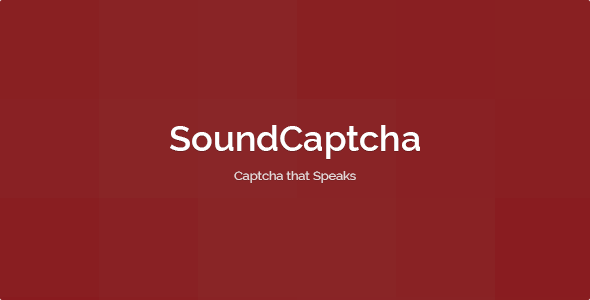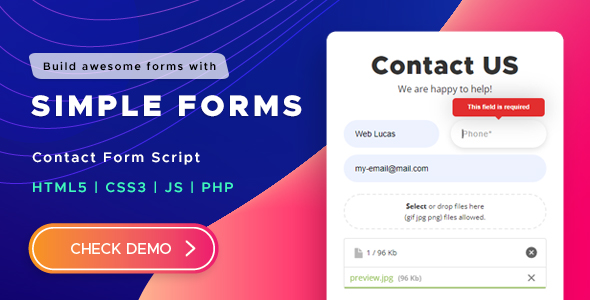You likely have encountered CAPTCHA on a number of websites you visit. It is that small image with a verification code that you type into a box before submitting something. CAPTCHA??is a very simple and common protection that helps prevent spam and the automatic submission of an operation by some kind of program or robot. CAPTCHA protection is used on web site forms and works by generating a random string, writing it to an image, then storing the string inside of a session. Then, the site checks the CAPTCHA when the form is submitted. In this article, you will learn how to make your own simple CAPTCHA image using PHP. You will create the CAPTCHA image step by step.
The core of the demo application is a PHP class capable of generating random text and an image that will contain the text (the class is encapsulated in the
GeneratedCaptcha.php script). This image will be your CAPTCHA. Take the following steps to create your CAPTCHA image.
1. Generate a random text. You store the characters allowed in the random text in an array, one character per position. Next, you use the
mt_rand function to generate random positions in your array. Then, you concatenate the corresponding characters into a string and provide the length of the string as an argument of the GenerateCaptchaText function, listed below:
function GenerateCaptchaText($c) {
$captcha = '';
$supportedCharacter = array('1','2','3',
'4','5','6',
'7','8','9',
'0','a','b',
'c','d','e',
'f','g','h',
'i','j','k',
'l','m','n',
'o','p','q',
'r','s','t',
'u','v','w',
'x','y','z',
'!','$','%');
for ($i = 1; $i <= $c; $i++) {
$position = mt_rand(0,sizeof($supportedCharacter) - 1);
$captcha .= $supportedCharacter[$position];
}
return $captcha;
}
2. Generate the image containing the random text. The main function of your class, GenerateCaptcha, accomplishes this task.
- Start by calling the
GenerateCaptchaTextfunction to obtain the random text that will be included in the picture://generate the captcha text $captcha = $this->GenerateCaptchaText($c);
- Create the CAPTCHA image using the
$wand$hwidth and height arguments set in the default CAPTCHA configuration section. To do that, you use theimagecreatefunction (see the PHP manual to learn more about this function)://create the image $image = @imagecreate($w, $h) or die('Cannot create main image!'); - Set the background and the text color of the CAPTCHA image using the
imagecolorallocatePHP function:// set the captcha image - text will be white rendered on black $bg_color = imagecolorallocate($image, 255, 255, 255); //we don't random here to be sure that the text is visible $captcha_color = imagecolorallocate($image, 0, 0, 0); //we don't random here to be sure that the text is visible
- The resulting CAPTCHA image will include some generated lines, dots, and rectangles. But before that, you generate random colors for it, using the
imagecolorallocatefunction://backstage colors - lines, dots and rectangles $line_color = imagecolorallocate($image, mt_rand(0,255), 0, 255); $dots_color = imagecolorallocate($image, mt_rand(0,255),255,mt_rand(0,255)); $rect_color = imagecolorallocate($image, 0,mt_rand(50,127),50);
- Add some “security” marks. For this, you will draw with random colors some dots, rectangles, and lines in the background of the CAPTCHA to make sure that a robot application can not identify and extract the CAPTCHA text (in addition, the text is rendered with different sizes and fonts, and at different coordinates). To generate random dots for the background of the CAPTCHA image, you use the
imagefilledellipsePHP function with randomxandycoordinates for the center, width, and height. Thexcoordinate of the center will be a number between 0 and the width of the ellipse; theycoordinate of the center is a number between 0 and the height of the ellipse. The width and height of the ellipse are random numbers between 0 and 3, for obtaining ellipses with dot aspect.// generate random dots for( $i=0; $i<($w * $h); $i++ ) { imagefilledellipse($image, mt_rand(0,$w), mt_rand(0,$h), mt_rand(0,3), mt_rand(0,3), $dots_color); }To generate random lines using the
imagelinePHP function, randomly generate the lengths and the coordinates of the lines as in the below code:// generate random lines for( $i=0; $i<($w + $h)/3; $i++ ) { imageline($image, mt_rand(0,$w), mt_rand(0,$h), mt_rand(0,$w), mt_rand(0,$h), $line_color); }To generate random rectangles using the
imagerectanglePHP function, randomly generate the sizes of the rectangles as in the below code:// generate random rectangles for( $i=0; $i<($w + $h)/3; $i++ ) { imagerectangle($image, mt_rand(0,$w), mt_rand(0,$h), mt_rand(0,$w), mt_rand(0,$h), $rect_color); } - Create a bounding box of text using TrueType fonts. To do that, you can use the
imagettfbboxPHP function:// create bounding box in pixels for a TrueType text $tb = imagettfbbox($h * 0.80, 0, $f, $captcha) or die('Cannot create bounding box in pixels for this TrueType text!'); - The most important step is writing the generated text on top of the generated image using the TrueType font. For this, you need the
imagettftextPHP function.$urcX = ($w - $tb[4])/2; //tb[4] = upper right corner, X position $urcY = ($h - $tb[5])/2; //tb[5] = upper right corner, Y position //write the given text into the image using TrueType font imagettftext($image, mt_rand($h * 0.50,$h * 0.80), 0, $urcX, $urcY, $captcha_color, $f , $captcha) or die('Cannot write the given text into the image using TrueType font!'); - For a nice design, you can go further and apply image filters. For example, you can apply
IMG_FILTER_NEGATE and IMG_FILTER_SMOOTHPHP predefined image filters using theimagefilterPHP function://apply two image filters imagefilter($image,IMG_FILTER_NEGATE); imagefilter($image,IMG_FILTER_SMOOTH,1);
- Output the CAPTCHA image on the browser:
// output captcha image to browser header('Content-Type: image/jpeg'); imagejpeg($image); imagedestroy($image); - The last step is to store the CAPTCHA text on the session:
// storing on session the captcha text $_SESSION['captchaCheck'] = $captcha;





